Live On Cruise Ships: What It REALLY Takes (And Costs!)
Your New Home? A Peek Inside What It REALLY Takes (And Costs!) To Live on Cruise Ships

After closely following several people that live on cruise ships and analysing the different options and ways they do it, I discovered many remarkable things like not only how they make it work, and importantly what it really costs, but I also the uncovered there is an unexpected dark side of living on cruise ships that you need to know about. More on that later.
Live on cruise ships: The Options
Before getting into the actual costs to live on cruise ships , I found there are five options to live full or part-time on cruise ships without being a crew member. Each with very different costs and pros and cons.
Residential Cruise Ships
You could buy a cabin on a line with residential cruise ships. Surprisingly, there are double the number of these from when I last reviewed this!
But you need plenty of money and must be sure you want to make a long-term commitment to living at sea. These are the lines that offer these.
World Residences at Sea https://aboardtheworld.com
The World Residences at Sea ship, MS The World, has been in service for 23 years making it the longest operating residential ship.
It’s upmarket, and the 165 cabins range from $2.5 million Studios to $15 million 3-bedroom Suites, with annual fees between $113,000 to $1 million.

Villa Vie Residences https://villavieresidences.com
Probably one of the best known currently is a recent entrant: Villa Vie Residences, which is currently on a 3-year around the world trip.
The 32-year-old Villa Vie Odyssey was previously Fred Olsen’s Braemar, holds up to 650 guests, offering full ownership, timeshare, or a pay-as-you-go where you can book segments.
It ranges from $130,000 Inside Cabins to buy with $48,000 per year fees up to $440,000 Suites with $132,000 per year in fees.
There are two lines which are still to launch.
Storylines https://www.storylines.com
Storylines, whose first ship is MS Narrative, is much delayed and keeps pushing back launch dates.
Their website now says it’s 2028. It has 647 apartments from $1.1 million Inside cabins to $8 million 3-Bedroom Suites.
And from what I can see, there’s at least $55,000 a year per person maintenance fee.
Clydebuilt https://www.clydebuilt.com
There is another one which many are sceptical about, called Clydebuilt.
It’s a Scottish startup who say they are going to build a luxury residential ship in Scotland called Dark Island with 236 luxury suites from one to three bedrooms.
It’s not clear if they have funding and lists no prices for the cabins yet.
As these are way out of most people’s budget, what is the next option that may be a bit more realistic, and not require that long-term commitment?
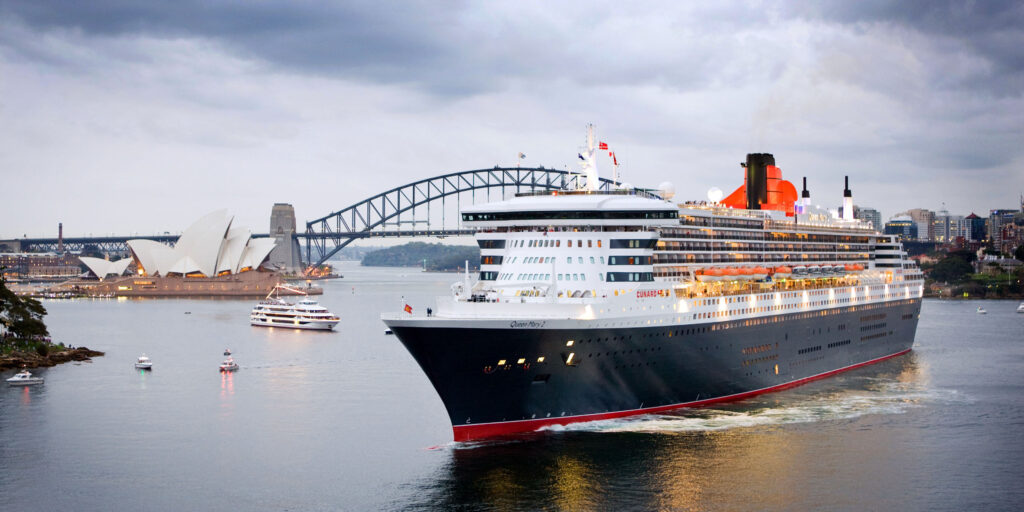
World and Grand Voyages
You can go on cruise line World or Grand Voyages, which last anything from two to six months, and combine them to fill the year.
Looking at examples to give you a sense of what it would cost, the Cunard Queen Anne 170-night / 4-month World Voyage next year in an Inside Cabin for two would be around $300 a night, that’s $37,000 / £18,700 pounds.
This price is consistent across other lines as the MSC Cruises 132-night World Voyage next year is $340 per night at $45,000 / £34,700.
If you did three of these four-month voyages to fill a year, that’s about $135,000 / £104,000 for the cruise before onboard costs like gratuities, drinks and so on that will add several thousands.
Annual Pass
The third option is by buying a part-time living on a cruise ship pass.
Virgin Voyages are the only cruise line I’m aware of that offer these.
They are costly because instead of being in an Inside Cabin, it is for a Balcony Cabins. Next year’s pass costs $199,000 / £154,000 and means you can sail on any voyage on any of their ships at any time for a year.
Enrichment Teacher
A third but not very easy to do is what a friend of mine does enabling him and his partner to spend at least 10 months a year living on board cruise ships. He is an artist and runs art and craft classes on board ships.
He is not paid for it but gets a cabin but must pay most of the other costs.
This past year he ran classes on a world cruise for four months, then was a month-long “Artist In Residence” on another line, followed by a 75-night South America Grand Voyage on yet another line and so on.
But that is a very unusual way and hard to find way to live on ships, so what about something everyone could do? And something that costs less than the residential ships and combining world voyages together option.
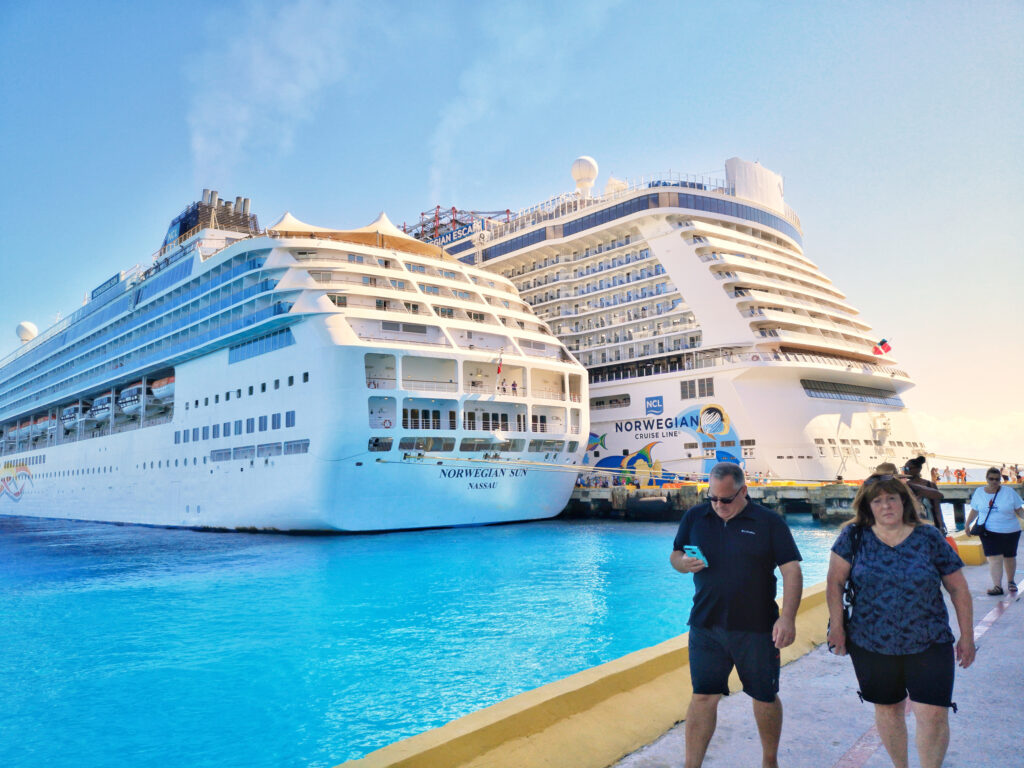
Live on cruise ships: The Doing It Yourself Option
I closely followed and studied how five sets of people have been living at sea, and while there are many common things they do that you need to know about, they broadly fall into two approaches determined by a common – but critical – decision they all made before doing it.
Before they worked out HOW to live at sea, they asked this question: Is my aim to simply live on a cruise ship at lowest cost and so where I go is less critical, or is my aim to see as much of the world while living on a cruise ship as inexpensively as possible?
In the “I want to live on a cruise ship with where it goes being less important camp”, I followed and analysed the well-known (and much reported in the cruising world), Mario Salcedo “Super Mario”, who at time of recording was soaring past his 1,000th cruise on Royal Caribbean, which he has been living on for years.
But even more interesting, I followed Kevin of the “30 And A Wake Up” YouTube Channel ( https://www.youtube.com/@30AndAWakeUp ) and Lynelle of the “From Poverty To Paradise” YouTube Channel (https://www.youtube.com/@PovertyToParadise ) as they have done what Mario is doing but for a third his cost.
More on how they do that to come shortly.
In the “I want to live on a ship but see more of the world” camp, I followed and analysed Rob and Allie of “Grounded Life Cruises” ( https://www.youtube.com/@GroundedLifeCruises ) and Fraser of “Fraser At Sea” (https://www.youtube.com/@FraserAtSea).
I will get to the exact costs of these approaches but to understand how they achieved them, you need to know what they all do to get to the lowest possible costs.
Inside Cabins
First, they cruised in inside cabins, as they are the cheapest, costing as much as half as cruising in a balcony cabin.
That comes with challenges that I cover when talking about the dark side of living on ships.
Also, they mostly booked using “Guaranteed Fares” which means they did not choose the cabin, again coming with some issues like location, noise and so on.
Caribbean
All agreed to get lowest cost it is best to spend all or most of the time cruising in the Caribbean out of Florida.
It is the busiest cruising region, by some margin, so there is lots of competition, multiple departures and much cheaper than every other region. Repositioning cruises are the other one all included, including to and from Europe as well as from Florida to Alaska.
These longer cruises are usually much cheaper per day than other cruises.
So, for example Super Mario says 85% of his time is spent in the Caribbean and 15% on repositioning cruises, and that is how he keeps his annual costs within his budget.
While both Kevin of “30 Years And Awake Up” and Rob and Allie of “Grounded Life Cruises” say they used them to keep annual costs low but add more variety to their cruising.
Fraser At Sea, as he wanted to see more of the world had the most variety, by cruising in Europe out of season in winter to get low prices there and then used transatlantic to get to Florida to then sail in the Caribbean for less as Europe prices increased going into summer.
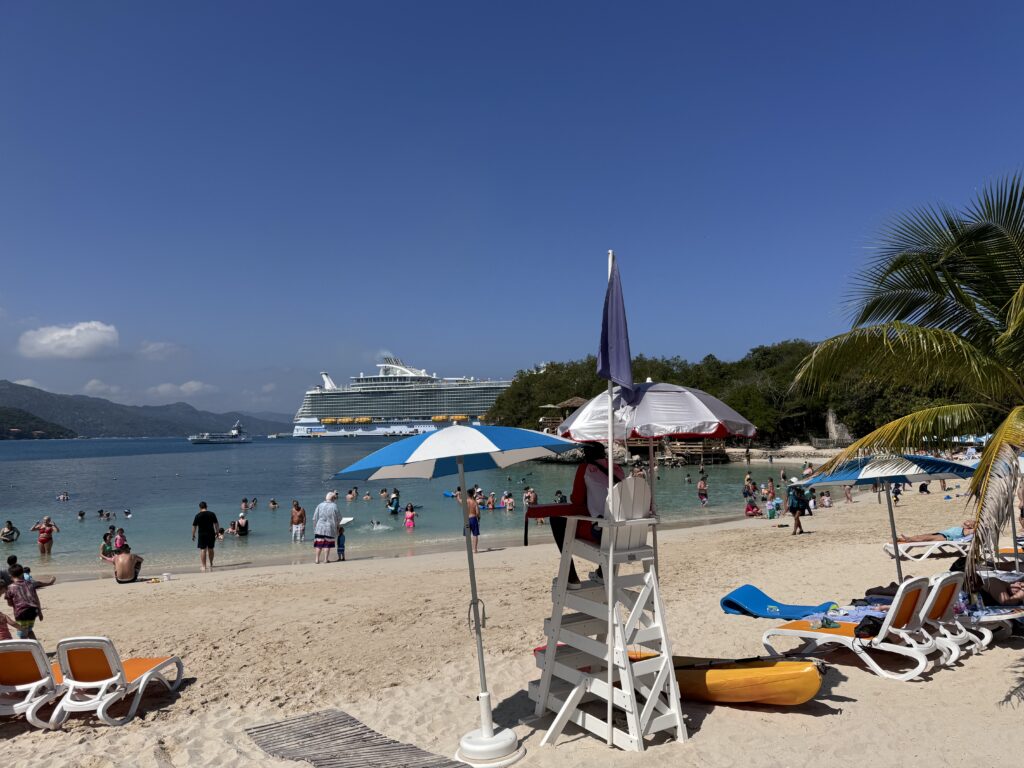
Limit Cruise Lines
Most stuck to one cruise line for their living at sea.
One reason was to build up loyalty to unlock perks on that line to push down costs.
For example, Super Mario only cruises on Royal Caribbean to get high status which means he pays a much lower solo supplement (150% not 200%), gets Wi-Fi to stay connected and work, and receives daily drinks vouchers.
However, there is a very different reason that Kevin of “30 And A Wake Up” stuck to Princess, and Lynelle of the “From Poverty To Paradise” sticks mostly to Carnival.
Both do that as before starting in their living on ships, they went on a cruise on their line of choice and played on the slots to hit the threshold to start getting free Inside Cabin cruise offers.
They did that as they saw they could dramatically cut the cost of living on cruise ships. Free casino cruises only require them to pay taxes and port fees.
Lynelle of Poverty to Paradise says she booked 60 of these free cruises across a year, while Kevin filled his year with free casino offer cruises but went for longer cruises.
Kevin said he found once he started getting offers, he could book up to three cruises each time for each one, and they kept coming as long as he played a bit on each cruise.
Another big plus is with Carnival and Princess casino offers, they both received on-board credit with every booking that further offset on-board costs like gratuities.
As an aside, if you want to consider using this approach the cruise lines to focus on are Carnival, Norwegian, Princess, and Royal Caribbean, and I have links to articles on my blog about how playing the casino works in the description of this.
- Need To Know Before Playing Cruise Ship Casino: https://www.tipsfortravellers.com/cruise-ship-casino-what-you-need-to-know-before-you-play/
How To Gamble On Cruise Ships To Unlock Free Cruises: https://www.tipsfortravellers.com/how-to-gamble-on-a-cruise-to-unlock-perks/
While Fraser At Sea did not stick to one line, he did try to use lines that offered status matching of loyalty where possible.
Not many do, with MSC Cruises matching even hotel and airline loyalty levels, and at times Virgin Voyages run loyalty matching programs.
Jumping Ships
There was one thing that everyone did, even when sticking to one line, and that was to keep jumping and changing between ships. Why?
All said that first, to get the best and lowest price in any week as fares do vary based on demand on different ships but also, as I talk in more depth in the dark side of living on cruise ships, to add much needed variety.
Outgoings Low
All stressed the need to have a ruthless focus on keeping outgoings low, and how this requires a different mindset when cruising for fun on a vacation.
While there are no escaping taxes, port taxes, and gratuities, it means not having drinks packages, going on excursions, specialty dining, and for some not even buying Wi-Fi packages and relying on connecting when in ports or buying ad-hoc when really needed.
Also, they stressed not forgetting when budgeting for the time living on ships costs like mobile phone, toiletries, and insurance. Plus, any costs you cannot avoid at home.
Share Holding
A good way to cut costs that only Kevin from 30 and Wake Up seemed to use, was owning shares in the corporation who owns the line you are on. In his case, as it was Princess that meant Carnival Corporation.
By having 100 shares he could get extra on-board credit for every cruise which ranged from $50 for cruises under 6 days to $250 for those over 14 days which again helped cover things like gratuities or other on-board purchases like drinks.
However, check the terms if going on casino comped cruises as when I looked it suggested for some lines that added on-board credit would not be given.
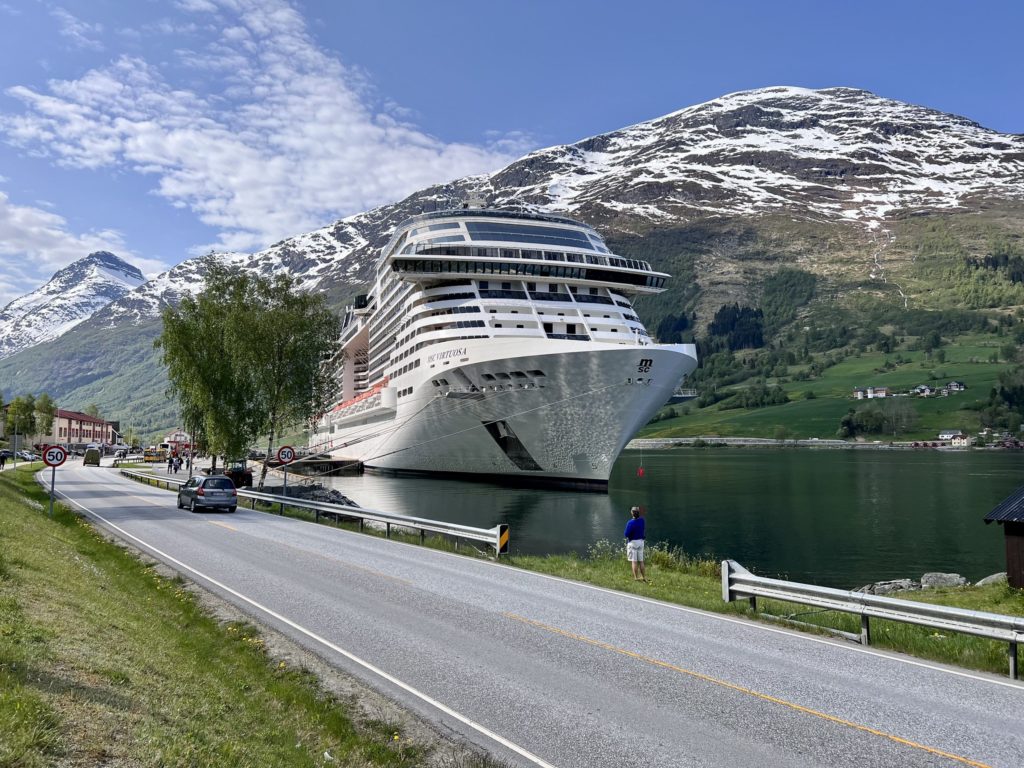
Income
I also noted that every one of them had an income stream they could generate while on board to help fund it.
Interestingly, all but Mario (who says he works 5 hours a day on investment business), turned talking about their living on ships, the ships, cabins and ports into their income stream.
Kevin used his existing “30 And A Wake Up” channel, Rob and Allie their “Grounded Life Cruises” and Fraser his “Fraser At Sea” channel, while Lynelle actually created “From Poverty To Paradise” to create content about her living on ships.
In fact, just as I made this Lynelle released a video saying that 9 months after starting the channel, her YouTube income was now covering her entire year’s budget to live on ships, meaning she no longer needed to use her savings to fund it.
But what did a year living on ships costs all these people?
The Costs
Not everybody has been comfortable sharing exactly how much they have spent across a year, but some have shared detailed spreadsheets and cost trackers, and this is what they show.
Super Mario regularly shares his costs, which average $275 a night as a solo traveller on Royal Caribbean in an inside cabin. That is around $8,300 per month, $100,000 a year.
So, while close to the base fare of those world cruises I mentioned earlier, his costs are including things like gratuities, drinks, and Wi-Fi that those world cruise fares did not.
As mentioned, they are mostly covered by his loyalty program status
However, both Kevin from “30 and Wake Up” and Lynelle from “Poverty to Paradise” who shared detailed costs from every month on board, are doing it for almost a third of that by getting free cruises through casino offers.
Both show they are out of pocket between $2,000 to $2,500 per month living on ships, so no more than $30,000.
Of course, this approach is more stressful and less certain than the approach Mario uses, which is more akin to what most of us would likely be looking at.
From what I can calculate, everyone not using the casino route average at least $300 a night, but as you have seen it takes a lot of work and effort.
Living on cruise ships I could see from following everyone is not always as exciting nor enjoyable as it appears looking from the outside or when we dream about it.
All talk about a dark side, unexpected consequences and challenges they had not expected. You can find out about them here in my article “The Dark Side of Living on Cruise Ships: By Those Who’ve Done it!”
Discover more from Tips For Travellers
Subscribe to get the latest posts sent to your email.


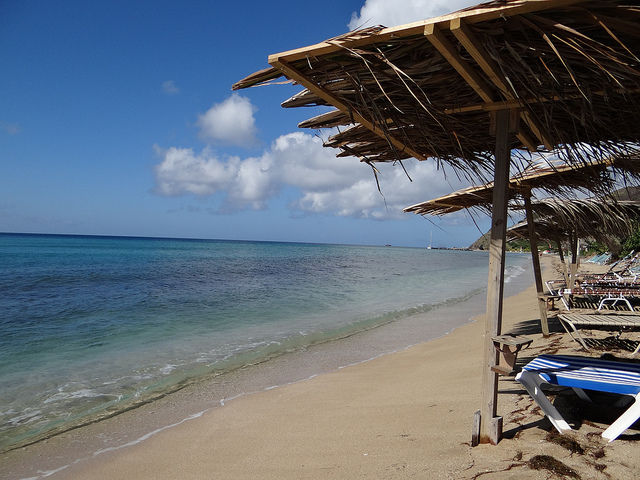











The link doesn’t work!
https://www.tipsfortravellers.com/dark-side-of-living-on-cruise-ships/